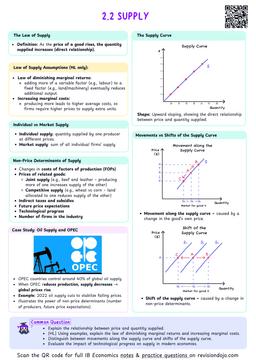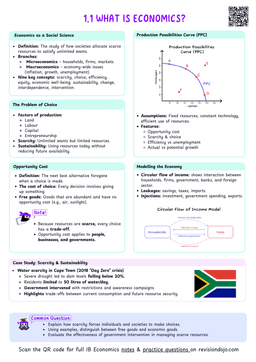Here, we will differentiate between the two types of fiscal policy:
- Expansionary Fiscal Policy
- Contractionary Fiscal Policy
Expansionary Fiscal Policy
Expansionary Fiscal Policy
Fiscal policy aimed at increasing aggregate demand by increasing government spending and/or reducing (business and personal) taxes.
Expansionary fiscal policies are used to close deflationary gaps by increasing aggregate demand.

- Observing the diagram above, the economy initially produces at $Y_{rec}$ with $AD_1$, below potential output as $Y_{rec}<Y_p$.
- The government can enact expansionary fiscal policies, such as:
- increase government spending (↑G)
- decrease income taxes (causing increase in consumer spending).
- decrease in corporate tax (causing increase in business investments).
- This will cause an increase the aggregate demand from $AD_1→AD_2$ .
- As a result, the recessionary gap will be eliminated, and the economy will be producing at $Y_p$.
In the New Classical model, when government uses expansionary fiscal policy (when current output is at LRAS):
- Aggregate demand increases, shifting the curve to the right.
- In the short run, this leads to higher output and lower unemployment.
- However, in the long run, the economy returns to the full employment level of output, and the only effect is a higher price level.
The same effect apples on Keynesian model as well:

When the government uses expansionary fiscal policy, in the Keynesian model:
- The aggregate demand increases, shifting the curve to the right $AD_1→AD_2$
- In the first stage (horizontal section), this leads to higher output without increasing the price level.
- As the economy moves towards the second stage (upward sloping section), output continues to increase, but inflationary pressures begin to rise, causing an increase in price level.
- This can be observed with $AD_3$ and $AD_4$ as both are on the ends of the second stage.
- Once the economy reaches the third stage (vertical section), further increases in aggregate demand only lead to higher prices without increasing output, which can be observed with $AD_5$ and $AD_6$.
The horizontal section of the Keynesian AS curve represents an economy operating below full employment, where there is spare capacity.
The sloping section of the Keynesian AS curve represents an economy operating below full employment, where there is spare capacity, but the resources are becoming scarce, leading to higher costs.
The vertical section of the Keynesian AS curve represents an economy at full employment, where there is no spare capacity, hence resulting in only a change in price.


